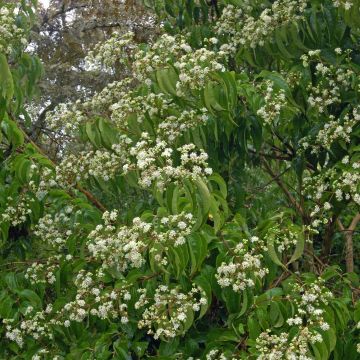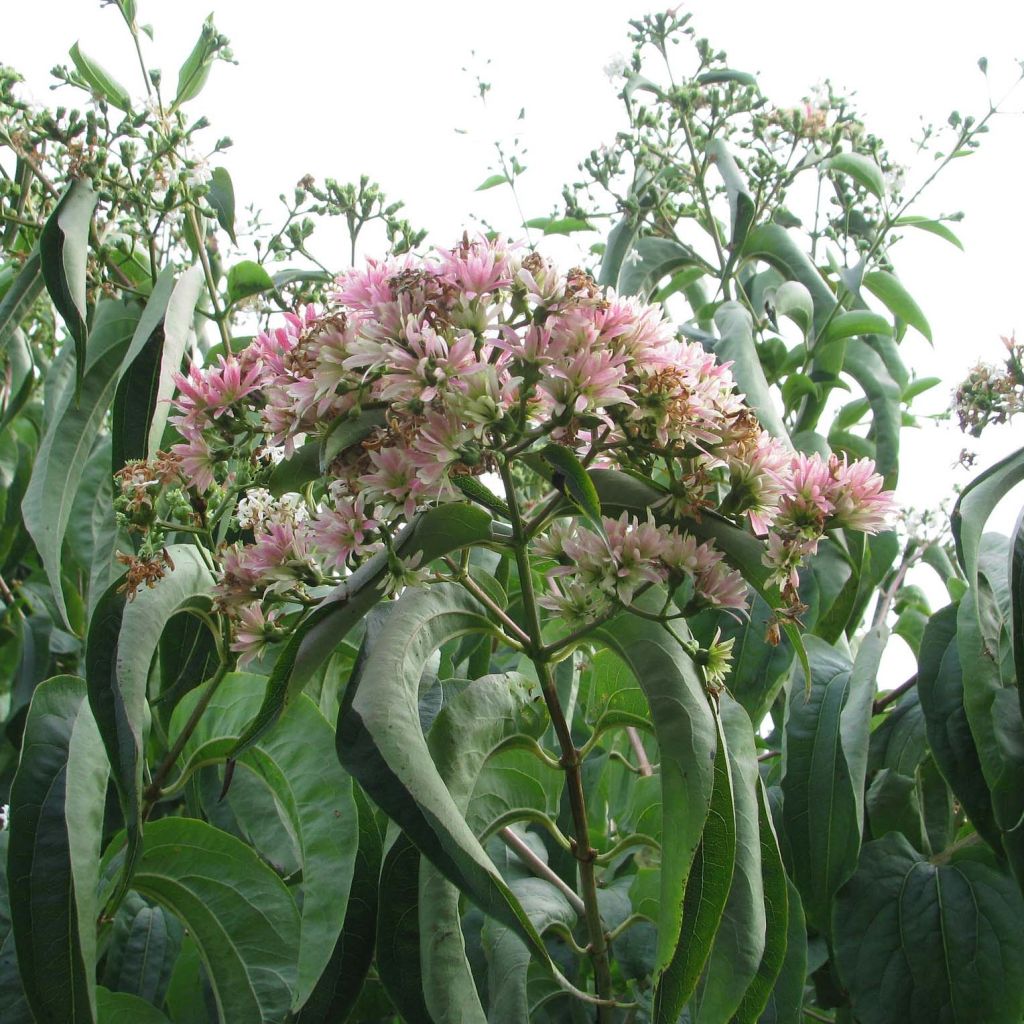

Heptacodium miconioides Tianshan (R)
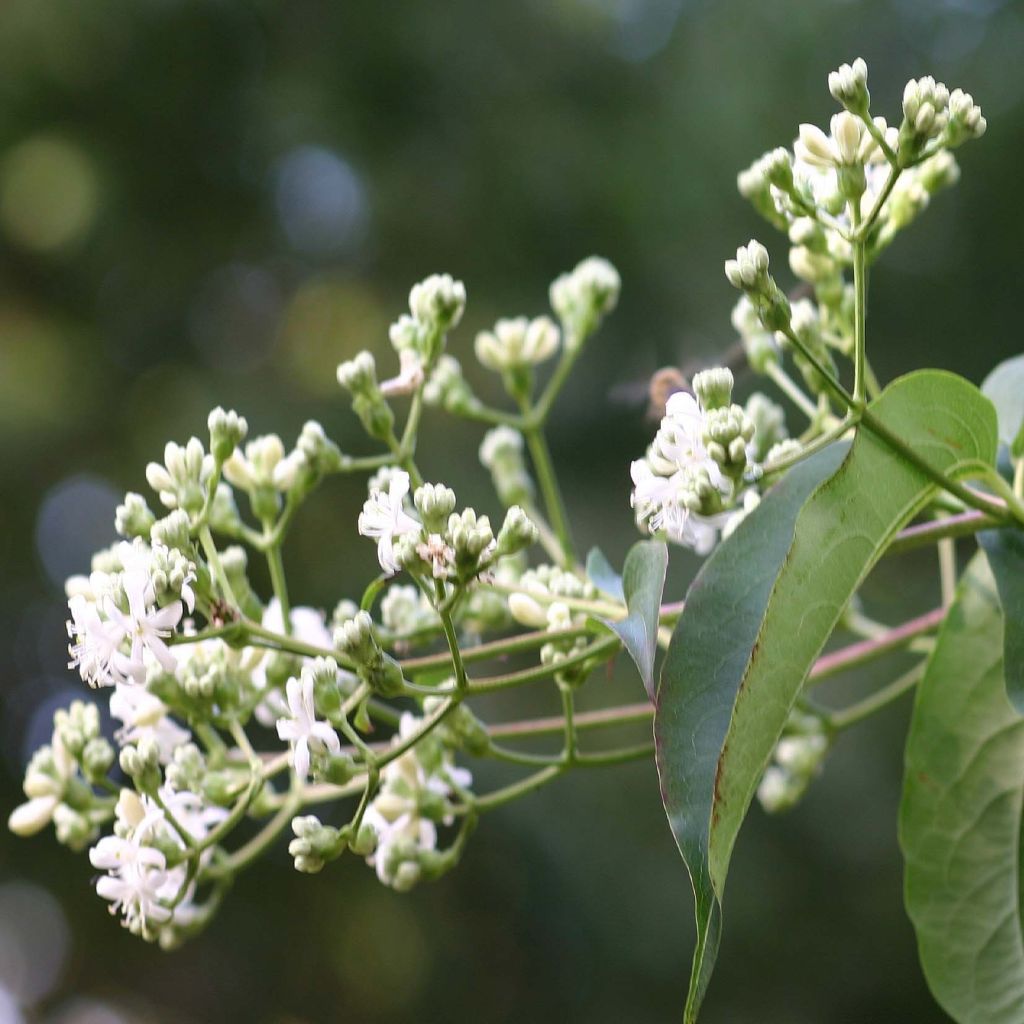

Heptacodium miconioides Tianshan (R)
Heptacodium miconioides Tianshan (R)
Heptacodium miconioides Tianshan (R)
Seven-son flower
Planted in autumn 2023, the Heptacodium myconoides has taken off this spring and is showing great promise. I'm looking forward to the end of all these rainy spells since January. It's on the right track.
Vanda, 28/04/2024
This item cannot be shipped to the selected country
Delivery charge from €5.90
Delivery charge from €5.90
More information
Schedule delivery date,
and select date in basket
This plant carries a 24 months recovery warranty
More information
We guarantee the quality of our plants for a full growing cycle, and will replace at our expense any plant that fails to recover under normal climatic and planting conditions.
From €5.90 for pickup delivery and €6.90 for home delivery
Express home delivery from €8.90.
From €5.90 for pickup delivery and €6.90 for home delivery
Express home delivery from €8.90.

Does this plant fit my garden?
Set up your Plantfit profile →
Description
The Heptacodium miconioides Tianshan stands out from the classic seven-flower tree with its less significant growth, more suitable for medium-sized gardens. This beautiful bush will be appreciated for its late summer flowering, which starts white and fragrant, then turns pink and eventually red, remaining decorative until autumn. Its bark peels off in brown and yellow strips and its foliage turns golden at the end of the season. Finally, its diverging and open habit is elegant and full of character, and by removing the lower branches, it can be transformed into a charming small tree. It is not demanding in terms of soil type, extremely hardy, and grows very quickly. These are all reasons to plant this unfairly unknown bush!
The Heptacodium miconioides is a deciduous tree from the Caprifoliaceae family, reaching 4 to 5 m (13 ft 1 in to 16 ft 5 in) in all directions in our climate, but sometimes reaching 7 to 8 m (23 to 26 ft 2 in) in its country of origin. It is native to a very restricted area located in eastern China, where it has apparently become rare. It most often grows with multiple "trunks" and has a bushy, spreading, and diverging habit.
The 'Tianshan' cultivar was selected by Minier nurseries in 2014. This compact variety reaches about 3 m (9 ft 10 in) in height with a 2 m (6 ft 7 in) spread, depending on the growing conditions. Its branches are adorned with opposite leaves, 7 to 12 cm (2.8 to 4.7 in) long, round with acute tips, slightly undulated, dark glossy green, unique and graphic. They turn a beautiful golden yellow color before falling, usually at the end of November. The flowers appear in late August, clustered in panicles at the end of the branches. They are small white star-shaped flowers with 5 sepals at the end of a tubular corolla, emitting a very pleasant fragrance reminiscent of jasmine. The flowering, rich in nectar, reaches its peak in September, with the white flowers gradually revealing calyxes tinged with cherry pink, which are as decorative as the flowers and persist until the first frost. The bark is smooth and has a beautiful light brown to beige-pink color, peeling off in variously colored flakes of brown, yellow, and salmon. To better admire it on a single trunk, it is preferable to gradually remove certain branches that emerge towards the base of a main stem.
For a little history, the Heptacodium miconioides was imported from China in the early 20th century; forgotten, it was rediscovered in the 1980s in a Belgian garden; dedicated to Courson in the 1990s, this bush remains relatively uncommon. It can be planted in a shrub bed, hedge, or even as a standalone plant in a small garden or in the middle of a dedicated flower bed, accompanied by easily cultivable Asian plants (Corydalis, Aconogonon, sarcococcas). It pairs well with abelias, shrubby honeysuckles, lilacs, and various viburnums. Asters and Japanese anemones will also accompany it later in the season. A carpet of hellebores, evergreen ferns (Nephrolepis exaltata), cyclamens, and epimediums will serve as a backdrop for its unique bark. A small bush clematis (Clematis heracleifolia, tangutica, or viticella) will climb and bloom among its branches in summer.
Report an error about the product description
Heptacodium miconioides Tianshan (R) in pictures
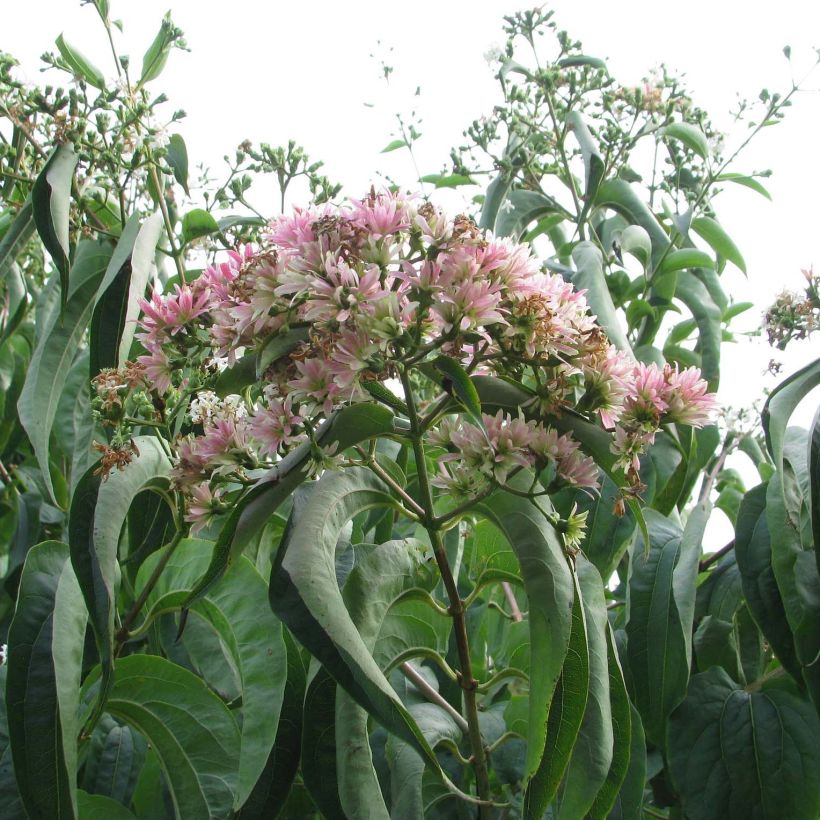

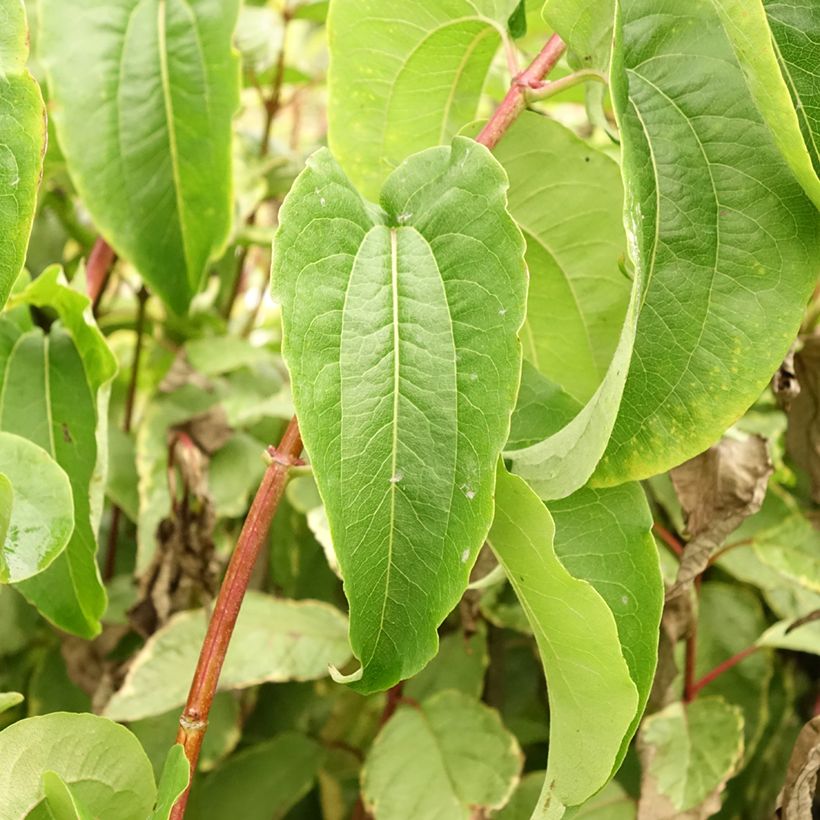

Plant habit
Flowering
Foliage
Botanical data
Heptacodium
miconioides
Tianshan (R)
Caprifoliaceae
Seven-son flower
Cultivar or hybrid
Other Heptacodium
Planting and care
Planting period
Intended location
Care
-
, onOrder confirmed
Reply from on Promesse de fleurs
Haven't found what you were looking for?
Hardiness is the lowest winter temperature a plant can endure without suffering serious damage or even dying. However, hardiness is affected by location (a sheltered area, such as a patio), protection (winter cover) and soil type (hardiness is improved by well-drained soil).

Photo Sharing Terms & Conditions
In order to encourage gardeners to interact and share their experiences, Promesse de fleurs offers various media enabling content to be uploaded onto its Site - in particular via the ‘Photo sharing’ module.
The User agrees to refrain from:
- Posting any content that is illegal, prejudicial, insulting, racist, inciteful to hatred, revisionist, contrary to public decency, that infringes on privacy or on the privacy rights of third parties, in particular the publicity rights of persons and goods, intellectual property rights, or the right to privacy.
- Submitting content on behalf of a third party;
- Impersonate the identity of a third party and/or publish any personal information about a third party;
In general, the User undertakes to refrain from any unethical behaviour.
All Content (in particular text, comments, files, images, photos, videos, creative works, etc.), which may be subject to property or intellectual property rights, image or other private rights, shall remain the property of the User, subject to the limited rights granted by the terms of the licence granted by Promesse de fleurs as stated below. Users are at liberty to publish or not to publish such Content on the Site, notably via the ‘Photo Sharing’ facility, and accept that this Content shall be made public and freely accessible, notably on the Internet.
Users further acknowledge, undertake to have ,and guarantee that they hold all necessary rights and permissions to publish such material on the Site, in particular with regard to the legislation in force pertaining to any privacy, property, intellectual property, image, or contractual rights, or rights of any other nature. By publishing such Content on the Site, Users acknowledge accepting full liability as publishers of the Content within the meaning of the law, and grant Promesse de fleurs, free of charge, an inclusive, worldwide licence for the said Content for the entire duration of its publication, including all reproduction, representation, up/downloading, displaying, performing, transmission, and storage rights.
Users also grant permission for their name to be linked to the Content and accept that this link may not always be made available.
By engaging in posting material, Users consent to their Content becoming automatically accessible on the Internet, in particular on other sites and/or blogs and/or web pages of the Promesse de fleurs site, including in particular social pages and the Promesse de fleurs catalogue.
Users may secure the removal of entrusted content free of charge by issuing a simple request via our contact form.
The flowering period indicated on our website applies to countries and regions located in USDA zone 8 (France, the United Kingdom, Ireland, the Netherlands, etc.)
It will vary according to where you live:
- In zones 9 to 10 (Italy, Spain, Greece, etc.), flowering will occur about 2 to 4 weeks earlier.
- In zones 6 to 7 (Germany, Poland, Slovenia, and lower mountainous regions), flowering will be delayed by 2 to 3 weeks.
- In zone 5 (Central Europe, Scandinavia), blooming will be delayed by 3 to 5 weeks.
In temperate climates, pruning of spring-flowering shrubs (forsythia, spireas, etc.) should be done just after flowering.
Pruning of summer-flowering shrubs (Indian Lilac, Perovskia, etc.) can be done in winter or spring.
In cold regions as well as with frost-sensitive plants, avoid pruning too early when severe frosts may still occur.
The planting period indicated on our website applies to countries and regions located in USDA zone 8 (France, United Kingdom, Ireland, Netherlands).
It will vary according to where you live:
- In Mediterranean zones (Marseille, Madrid, Milan, etc.), autumn and winter are the best planting periods.
- In continental zones (Strasbourg, Munich, Vienna, etc.), delay planting by 2 to 3 weeks in spring and bring it forward by 2 to 4 weeks in autumn.
- In mountainous regions (the Alps, Pyrenees, Carpathians, etc.), it is best to plant in late spring (May-June) or late summer (August-September).
The harvesting period indicated on our website applies to countries and regions in USDA zone 8 (France, England, Ireland, the Netherlands).
In colder areas (Scandinavia, Poland, Austria...) fruit and vegetable harvests are likely to be delayed by 3-4 weeks.
In warmer areas (Italy, Spain, Greece, etc.), harvesting will probably take place earlier, depending on weather conditions.
The sowing periods indicated on our website apply to countries and regions within USDA Zone 8 (France, UK, Ireland, Netherlands).
In colder areas (Scandinavia, Poland, Austria...), delay any outdoor sowing by 3-4 weeks, or sow under glass.
In warmer climes (Italy, Spain, Greece, etc.), bring outdoor sowing forward by a few weeks.

































